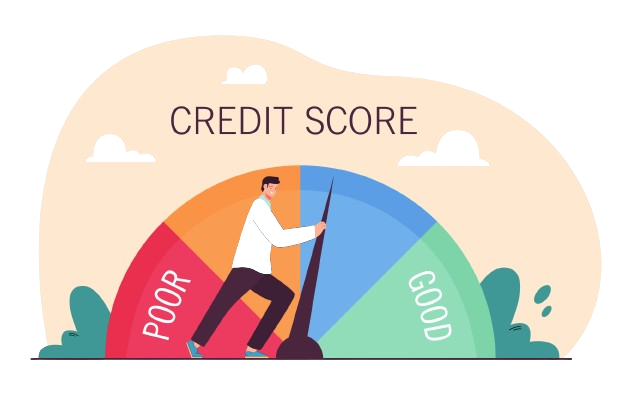- Credit Restoration Experts Nationwide

The Credit Report Revealed – Part I
June 27, 2017
What Is The Difference Between A FICO Score and A Vantage Score?
June 27, 2017The Credit Report Revealed – Part II

Credit reports can be mysterious documents to read and understand. In this section, we will dissect the document by sections so you can become more familiar with the terminology, structure and information it contains about you.
Primary Data (your identity): Primary data consists of your first, middle and last name, including any prefixes and suffixes…i.e. DR. or Jr. or III. Your physical residential address with the number, street, apartment number, city, state and zip code are next. If you reside in a rural area, the complete address to which a document would be mailed to you is required. Post Office Boxes are acceptable, but should not be used in place of a physical address if you have one. As you move from time to time, and do not inform the bureaus yourself (most people do not do this step), then the next time you apply for credit with your changed address or pay a bill at a creditor who reports credit, your new address will be added to the data…but not necessarily will your file be updated immediately. Additionally, the credit bureaus also receive data from the government and social security offices, so any variations in your address the way you put it on an application or a credit line will also be added to your credit file.
Primary data also consists of your date of birth, and social security number. If you do not have a social security number, your data file will be incomplete and erroneous. If you are using a Taxpayer Identification Number (TIN) which is granted to illegal aliens under certain circumstances (see section on Social Security Numbers and Other Forms of Identification), your credit file may not be accessible through the credit bureaus, as they often do not recognize these numbers.
A great controversy has been raging for the last few years about whether or not a CPN number, is legal to use in place of a social security number. CPN means “credit profile number”, and you can find many sources to create these numbers for a lot of money. Especially if it claims to be a “validated” or “verified” CPN. BEWARE! It is illegal to use a substitute social security number. Why would you want a new number? Well, if you have had your identity stolen, or just had a bad credit file for a long time, it may seem attractive to acquire a CPN so you can “start over”. But you will not be able to attain credit legally with a substitute number without possibly landing in jail for credit fraud. For more information on this subject, you can listen to a video on this subject at http://www.youtube.com/watch?v=0hneplxsLXw
Remember, getting a CPN number requires that you provide a new address, new phone number, and previous address. BEWARE! If you lie on a credit application, you are committing credit fraud. Additionally, you may not use an EIN number, which is an identification number for businesses. The Credit Repair Organizations Act, or CROA states that no organization may do this for you, either. To read more about CROA, you can go to http://www.ftc.gov/ro/chro/credit.shtm
Other identifying data that the bureaus may have in your credit file but not necessarily show on your credit report include, but is not limited to the following: Male/Female, Single/Married/Divorced/Widowed, number of children, anniversary date, drivers license number, your previous residential addresses, your employer information going back 10 years and more. All of this data is kept because it allows the bureaus to sort your information by category in order to sell more data to businesses. Consider what a potential mortgage lender can do by pulling your credit report…compare and contrast what you put on your application by what they can purchase from the bureau…to be sure you are telling the truth, the whole truth, and nothing but the truth!
When you understand the power that the bureaus have over your credit health, it becomes very clear how important it is for you to make sure that EVERYTHING in your credit file be as accurate as possible, at every bureau!
Secondary Data: This is a snapshot of your current financial life…and includes such information as the status of each loan that you have at that moment (plus or minus about 90 days because of the delays in reporting the data). This includes loan types such as a home mortgage, a lease or rental agreement for your place of residence, each car loan, every credit card or line of credit, your banking information if you have any lines of credit or loans through them (checking and savings account balances are not reported). Some data is gathered also from your creditors when you make a purchase, if you filled out an application for an open line of credit. A good example of this would be Dell Computers. Also in this section is current information about any bankruptcies, foreclosures, judgments, voluntary or involuntary repossessions, etc.
Tertiary (third type) Data: Your past history going back 10 years at the minimum is also stored, so that any creditor may see if you have had any credit problems within that time. It is important to note that certain credit relationships may not be reported if the creditor does not report to the bureaus, such as an owner of a home that you rented; so if you were asked to leave for not paying your rent, this may not be reflected in your credit report. It is vital that you find out by reviewing your credit report.
Of significance to you will be whether or not you have a spouse that has had trouble or is currently having financial difficulties. Although credit data is kept individually, certain states that have laws regarding married couples where “community property[1]” is the standard may find that cross references are made on the credit report about your spouse’s credit history. For instance, a bankruptcy granted in a community property state will show up on both spouse’s credit reports. When a creditor pulls credit to consider whether or not to lend to you, he will generally pull the credit reports of both spouses, and average the scores, whether or not both spouses are employed. The creditor may be looking for the 10 year history on both spouses, regardless of how long the couple has been married.
The creditor will look at each loan, credit card or line of credit on each report, and assess whether the history shows all payments on time, or not. You will have to answer questions about any late payments or other negative aspects of your credit history, usually in writing, to that creditor before your credit request will go to an underwriter[2]. The underwriter, using the guidelines developed by that financial institution, will look at your entire history and that of your spouse, and decide whether you are creditworthy or not.
Underwriting is a science, designed to decide whether the risk associated with lending money to you is sufficiently low, because most loans are “sold off” to third parties after a certain period of time. In order to sell financial assets, a financial institution needs to have a certain percentage of their portfolio in low risk loans. In this way, they can sell them for the highest amount possible, and use those funds to lend more money to more borrowers.
If you find that several items on your credit report are incorrect, it is solely your responsibility to get them corrected. There are several chapters on this website devoted to explaining how to do that. See Credit Restoration. You can click here to get started on that path.

